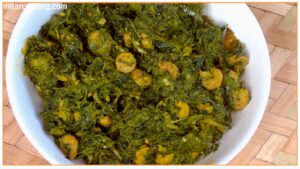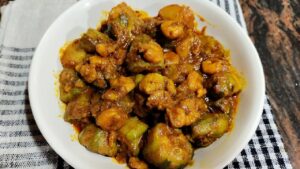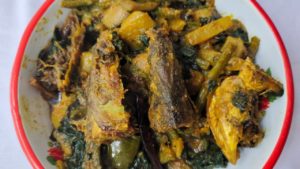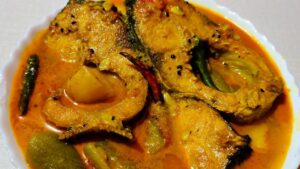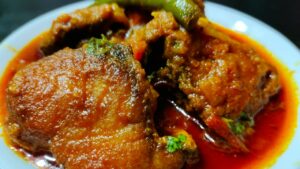Kochur loti chingri is a popular Bengali dish made with two key ingredients: kochur loti, which refers to the taro stolon, and chingri, which means prawns or shrimp.
The taro plant, known as kochu in Bengali, has edible stems that are commonly used in Bengali cuisine.
These stems are peeled, cleaned, and cut into small pieces, which are then cooked with prawns to make kochur loti chingri. Here is the complete recipe to follow.

Key Takeaways:
- Kochur Loti Chingri is a popular Bengali dish made with taro stolons (Kochur Loti) and prawns (Chingri).
- Kochur Loti Chingri is usually served with steamed rice or roti or luchi.
- The dish tastes mildly earthy, sweet, and savory.
- An alternative to Kochur Loti Chingri can be Kochu Shaak Chingri. Other alternatives include Chinri Bhapa or Chingri Macher Malai Curry. You may also try Chingri Paturi as an alternative.
The Ingredients:
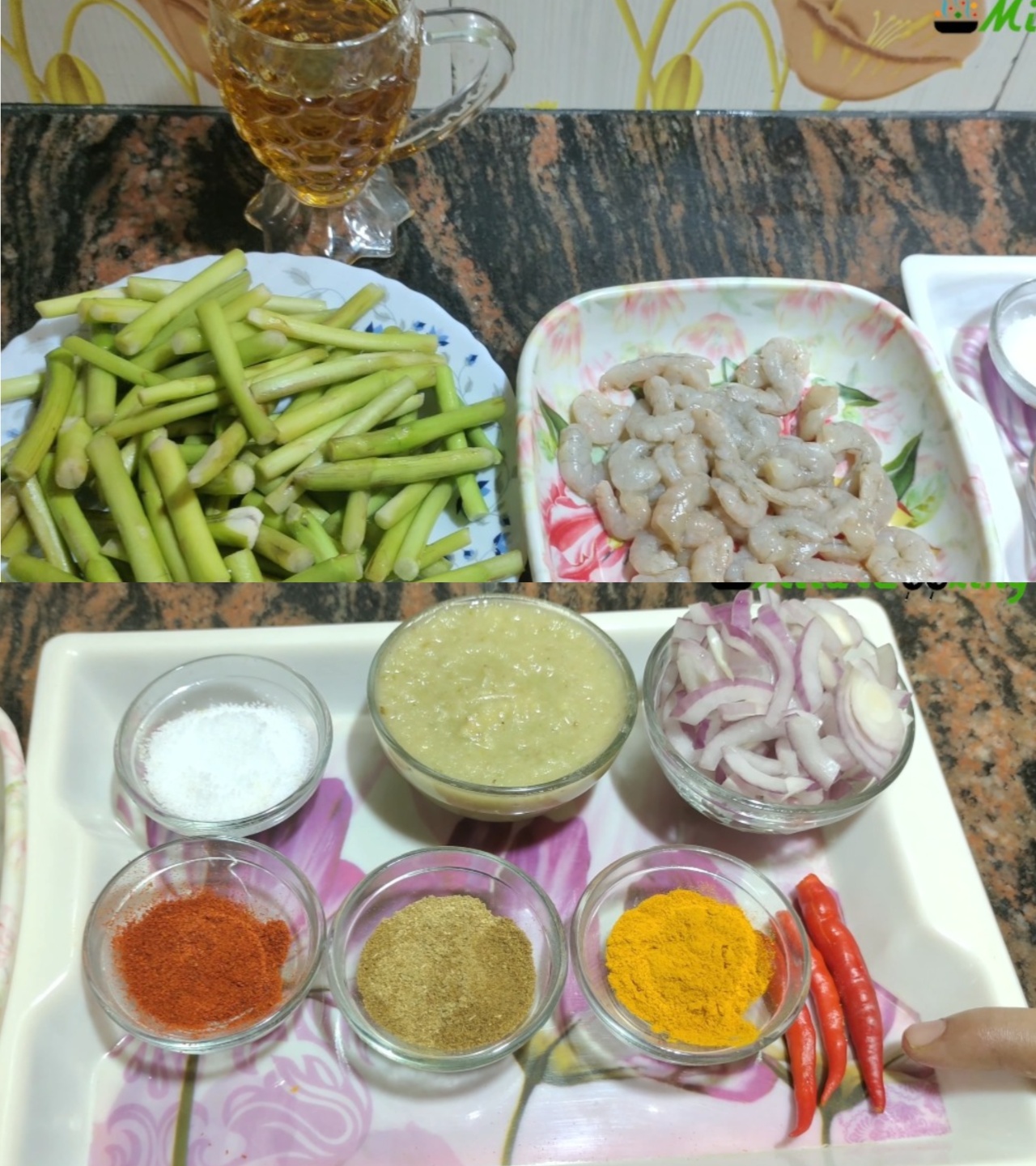
- Kochur Loti or loti (Taro stolon): 400g (cut, peeled & cleaned)
- Chingri (Prawns): 200gm (cut, deveined & cleaned)
- Onion: 1 big size, chopped
- Ginger-Garlic-Chili paste: ginger 1 inch, garlic cloves 10 pieces, green chilis 2
- Salt: as required
- Kashmiri red chili: ½ tbsp
- Cumin powder: ½ tbsp
- Coriander powder: ½ tbsp
- Turmeric: 1 tbsp
- Red colored green chilis: 3 pieces (longitudinally slit)
- Mustard oil: 3 tbsp
How to Cook Kochur Loti Chingri (Step by Step Images)?
1. First, marinate the prawns with a pinch of salt and turmeric. Keep it aside for 10 mins.
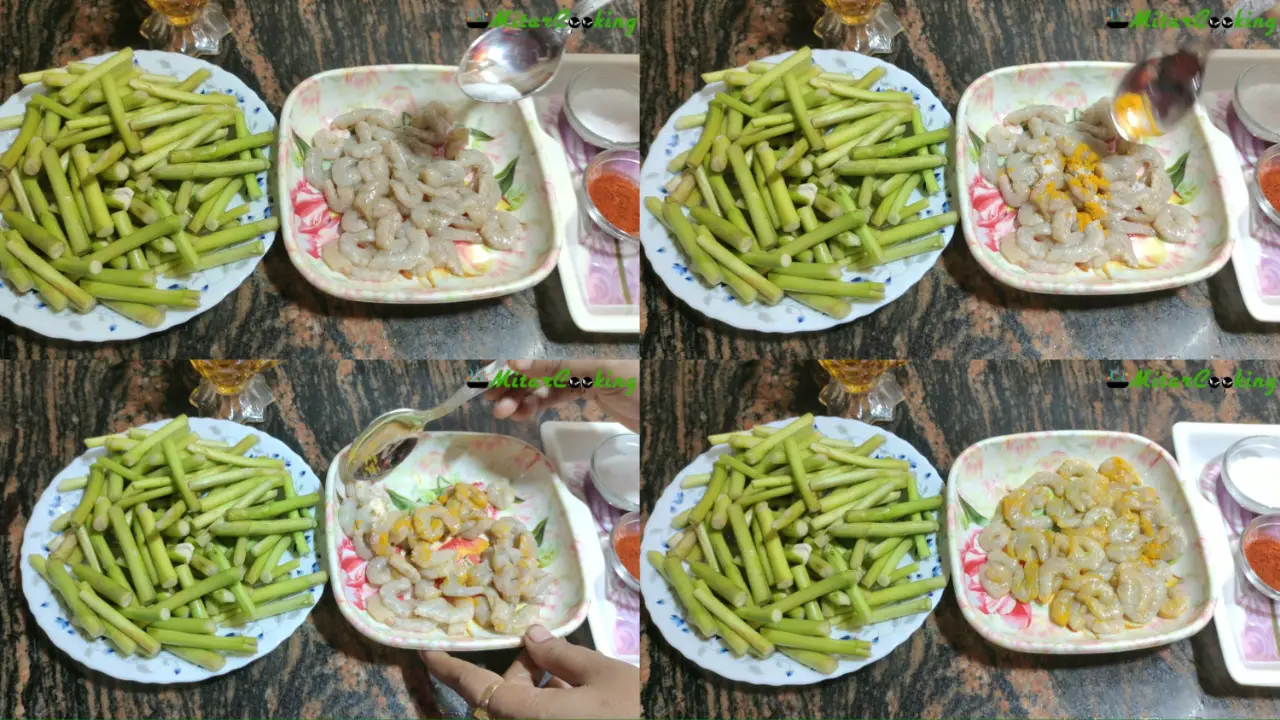
2. After 10 mins, you can see the change of color in the prawns.
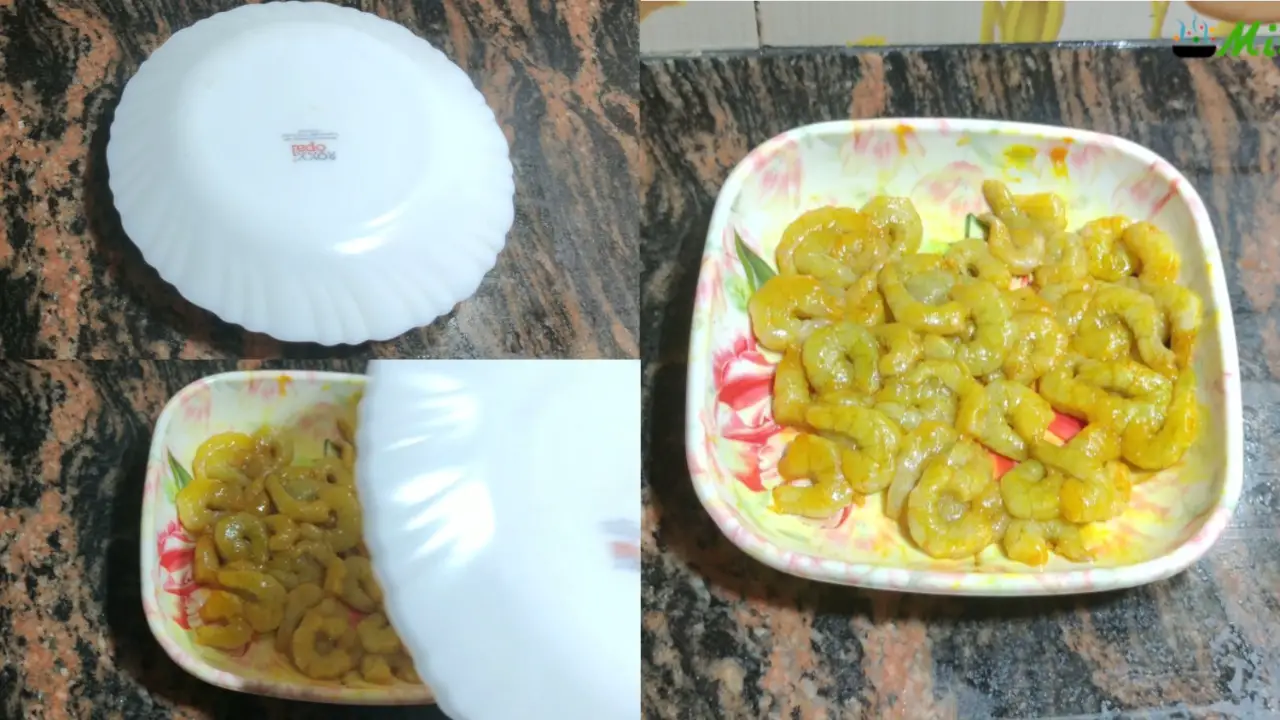
3. Heat the wok on a gas stove. When it is ready, add mustard oil to sauté the prawns.
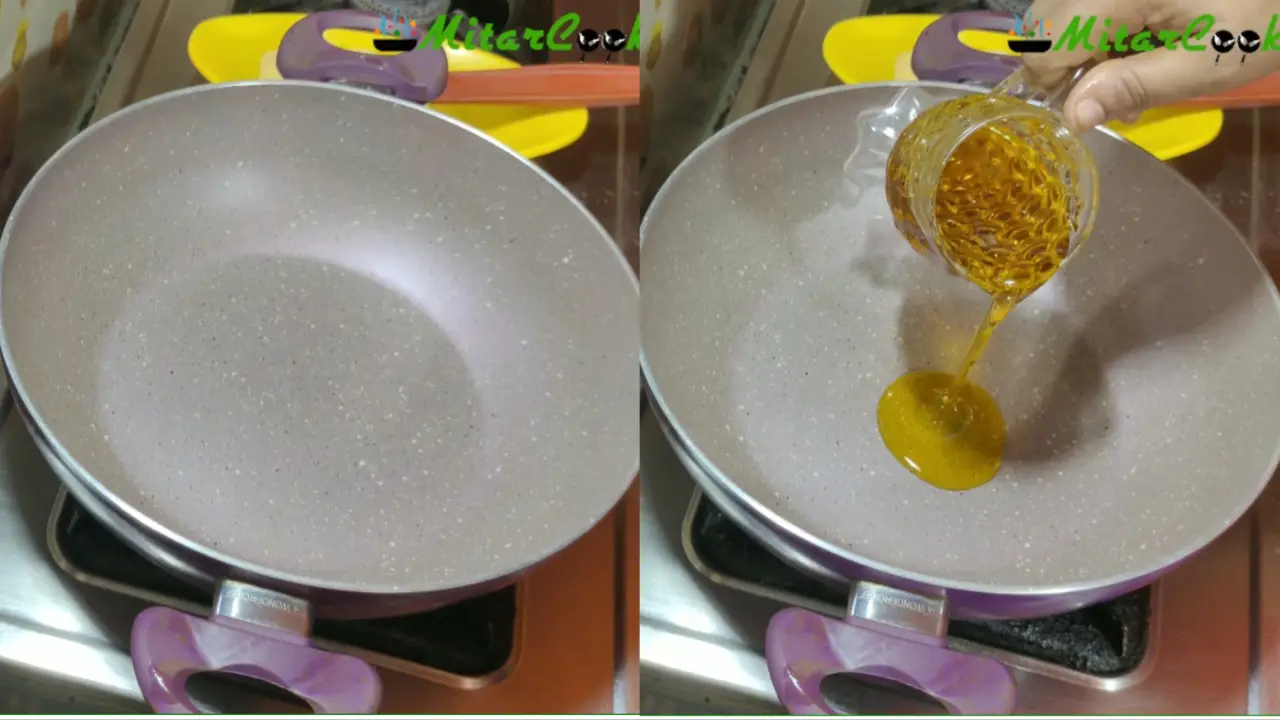
4. When the oil is hot, add the marinated prawns. Keep the flame low to medium. Sauté the prawns lightly.
(Expert tip: Do not overdo it, otherwise, the prawns will become rubbery.)
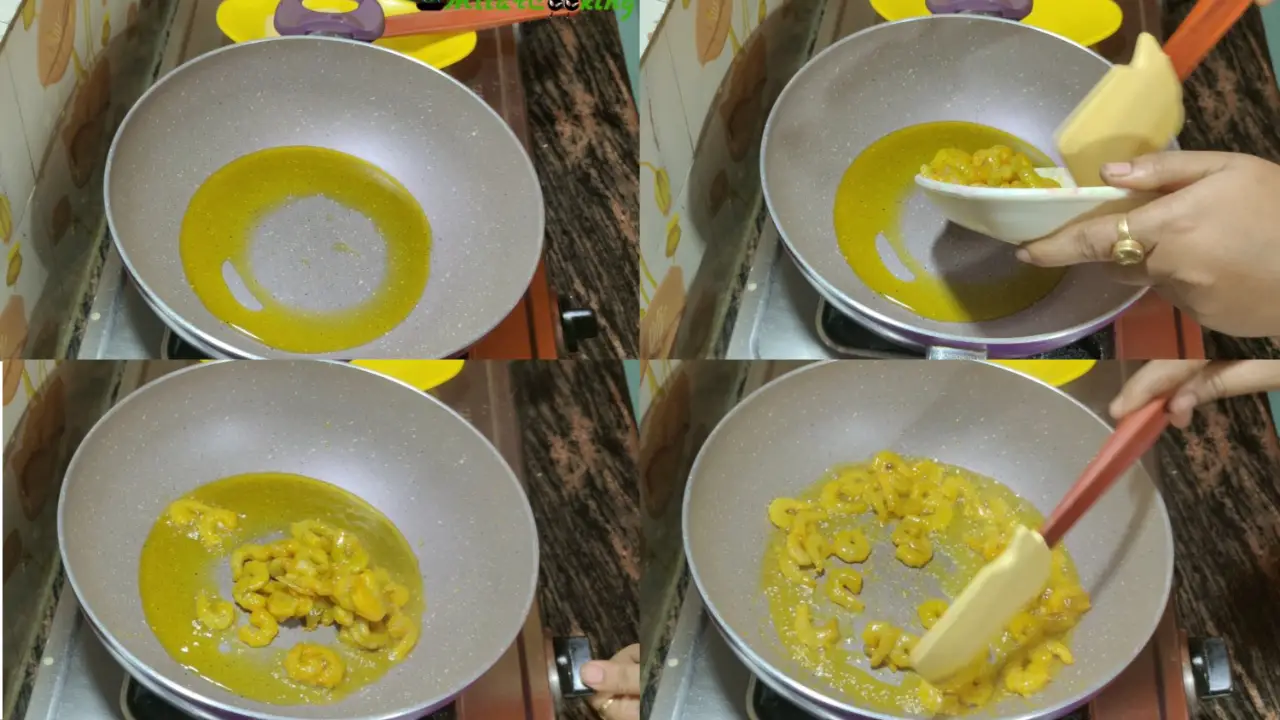
5. While sautéing the prawns, you will notice a little bit of water oozing out from them. Take out the prawns when the water has dried up.
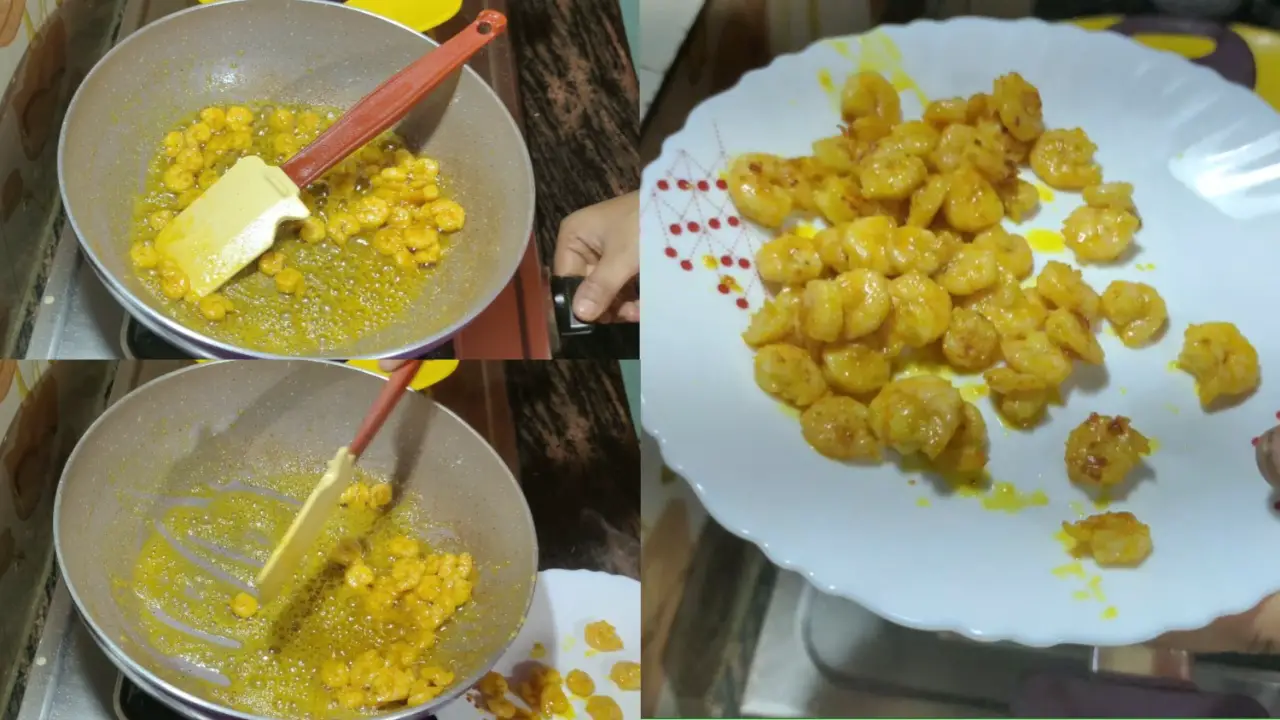
6. Add bit of oil into the same wok, raise the flame and let it heat up.
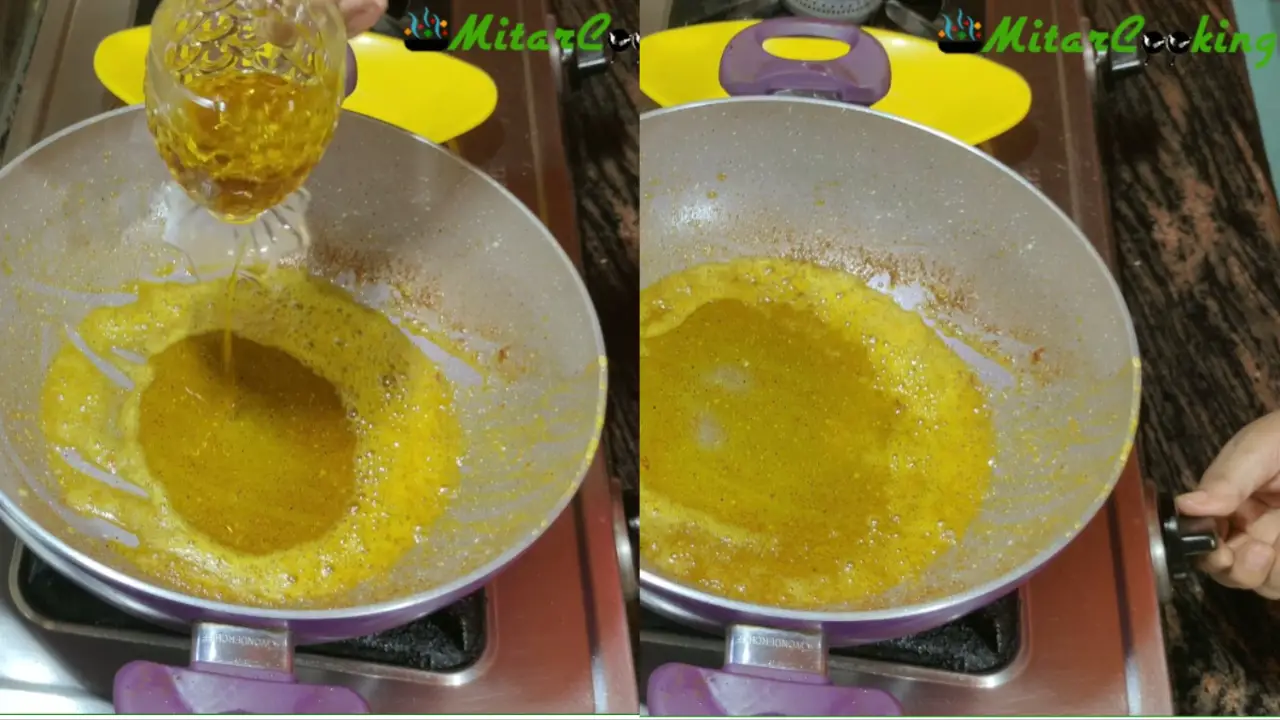
7. When the oil is hot, add the chopped onions. Sauté the onions for 2 mins.
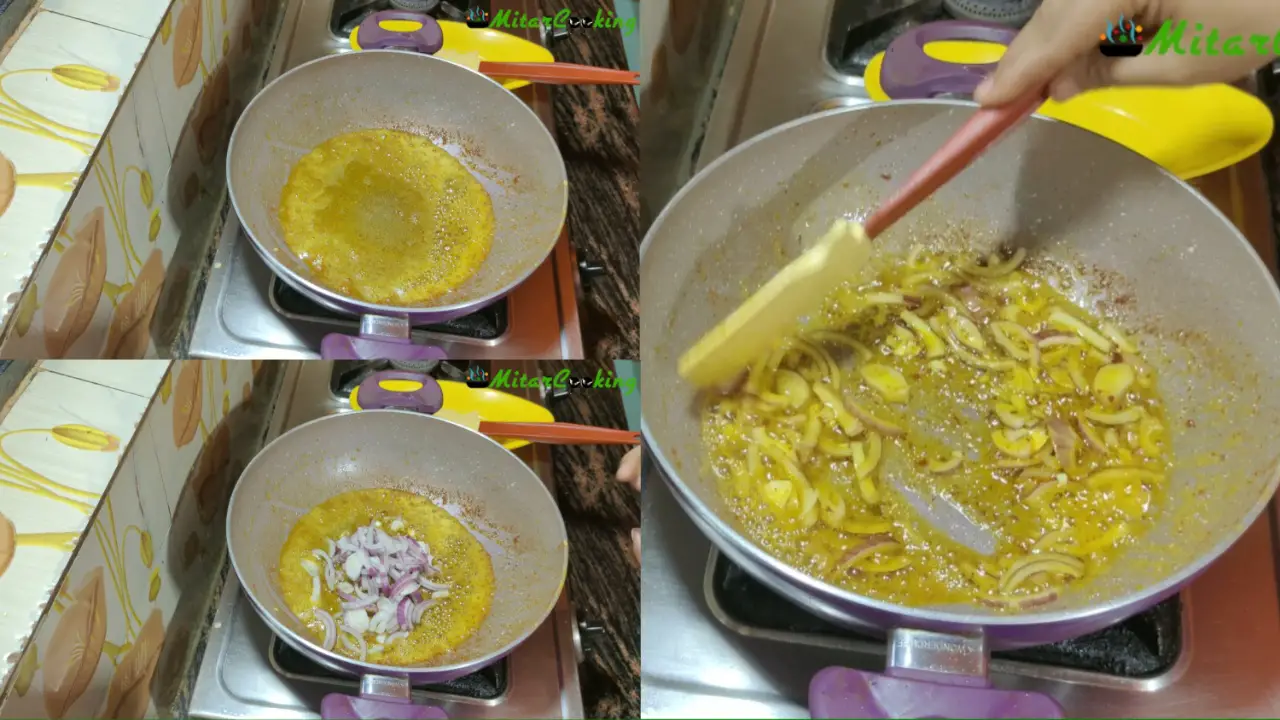
8. When the onions are slightly fried, add the ginger-garlic-chili paste to the wok. Keep the flame low to medium.
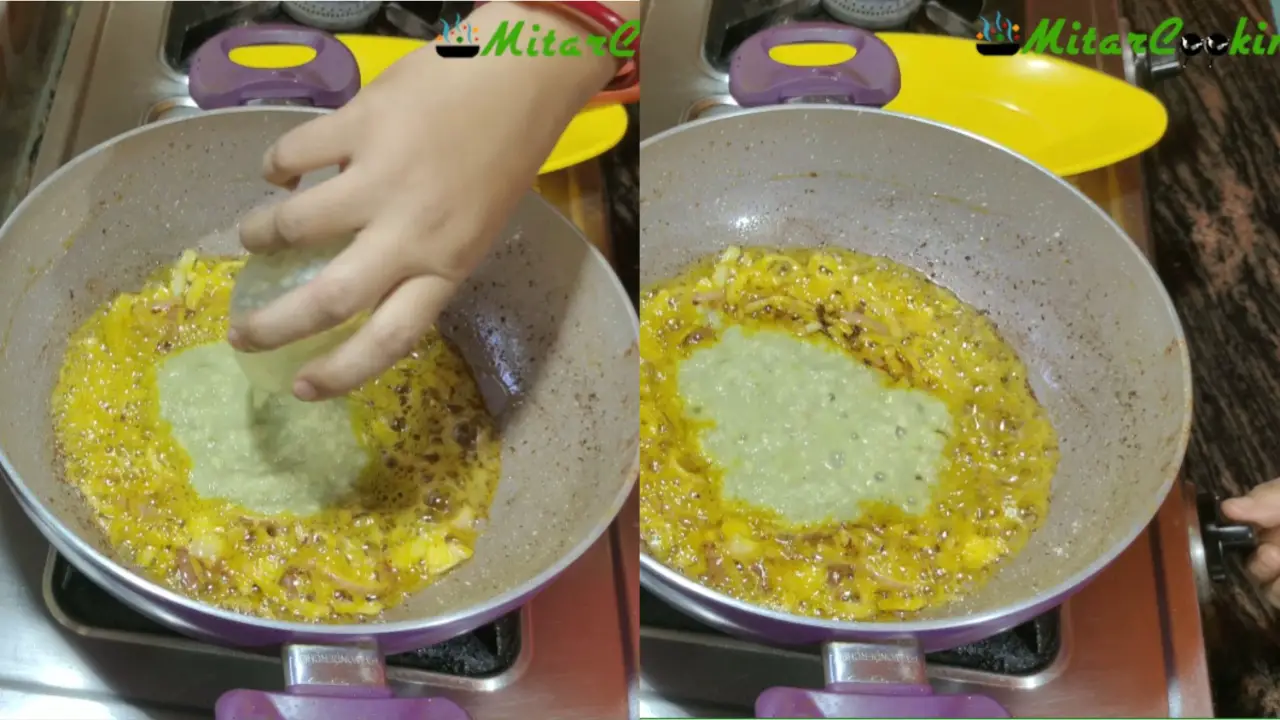
9. Sauté the paste along with the chopped onions for 2 mins. Keep the flame at medium to high.
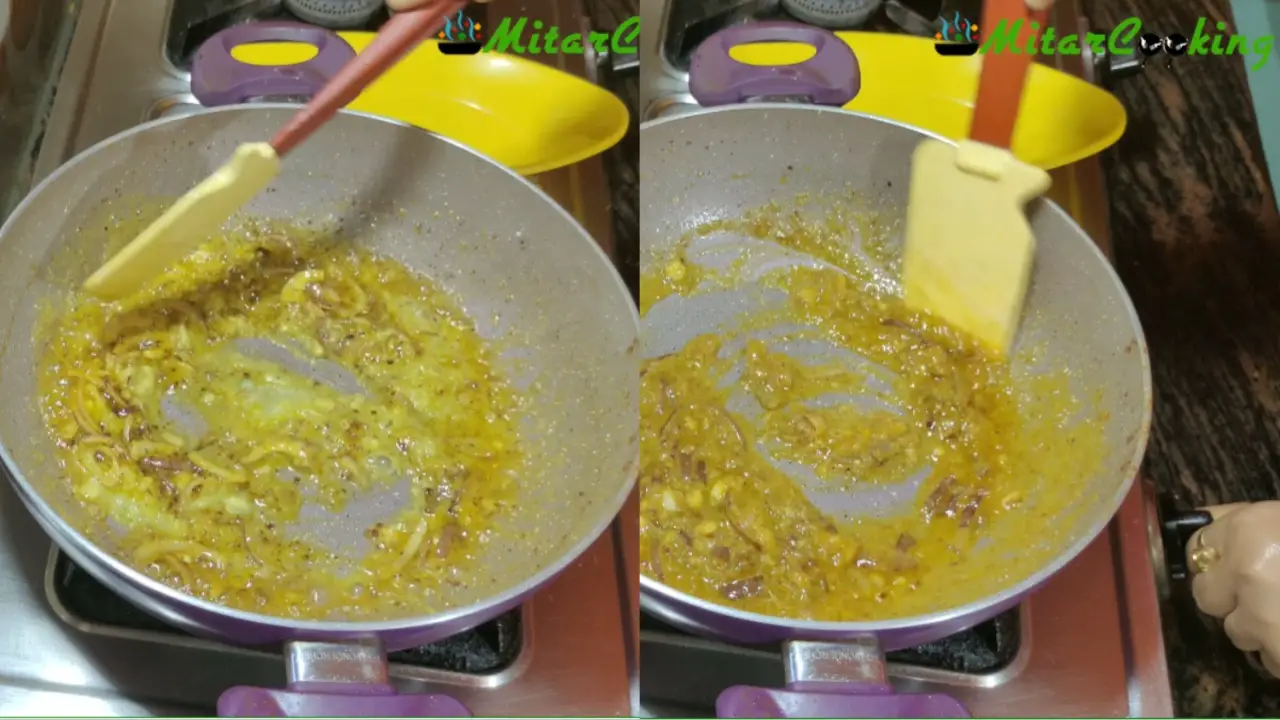
10. Now, add the powdered masalas. First, add the ½ tablespoon turmeric and then the ½ tablespoon red chili powder, followed by ½ tablespoon coriander and cumin powder. At this moment, add a pinch of salt to the preparation.
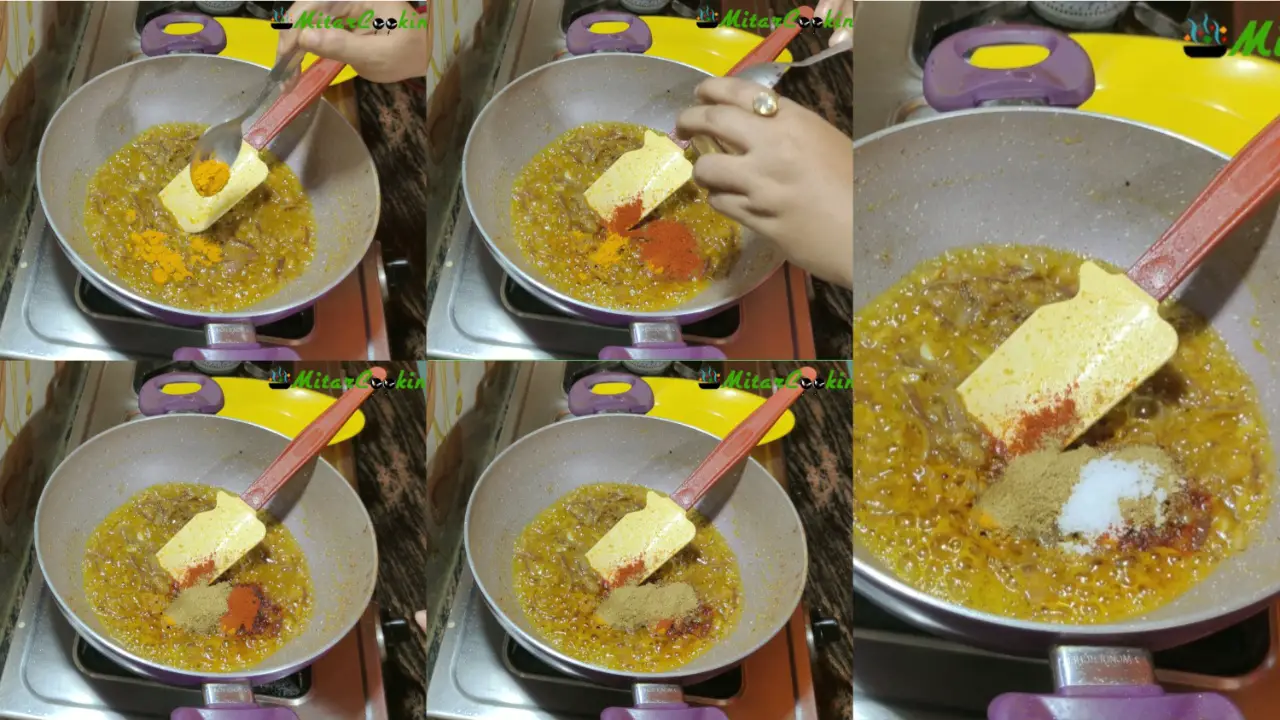
11. Sauté all the ingredients and add a little bit of water to cook the masala. 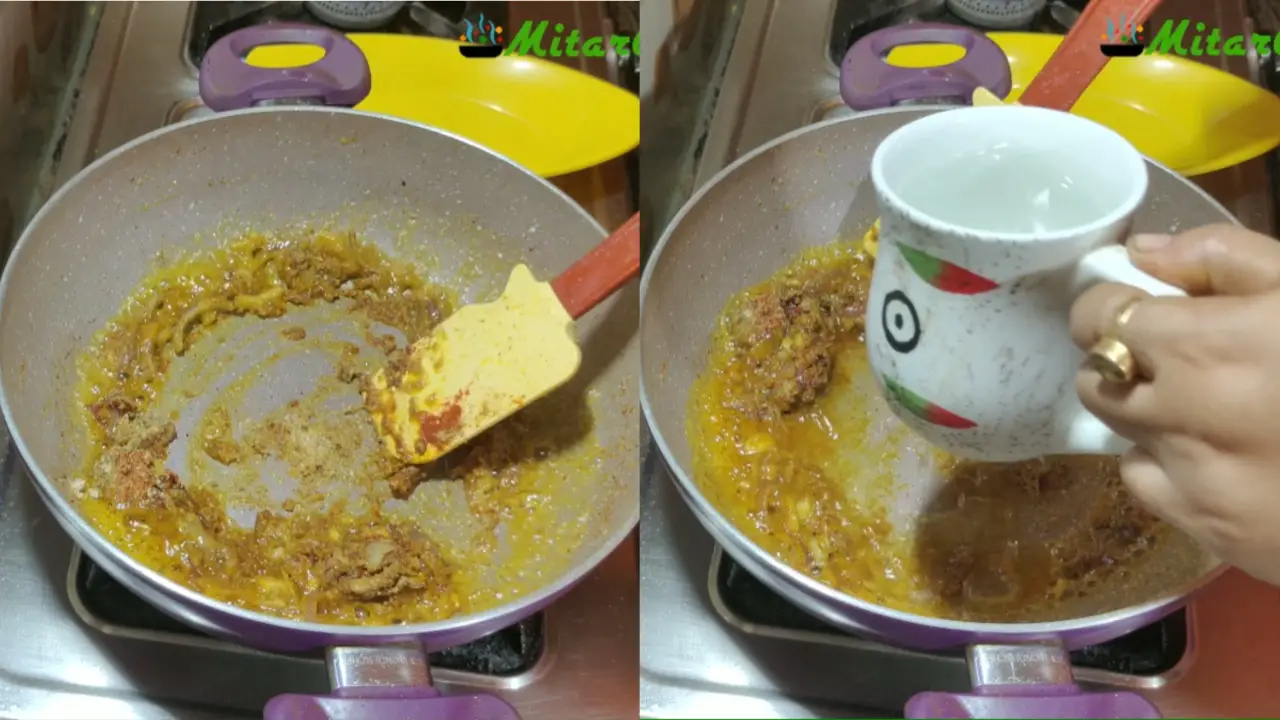
12. As soon as the water dries out, add the taro stolons.
(Expert tip: These stolons are baby stolons, which is why I did not add them directly in the oil to sauté. Instead, I added them to the masalas. If you want then you can add the stalons directly into the oil to stir-fry it.) 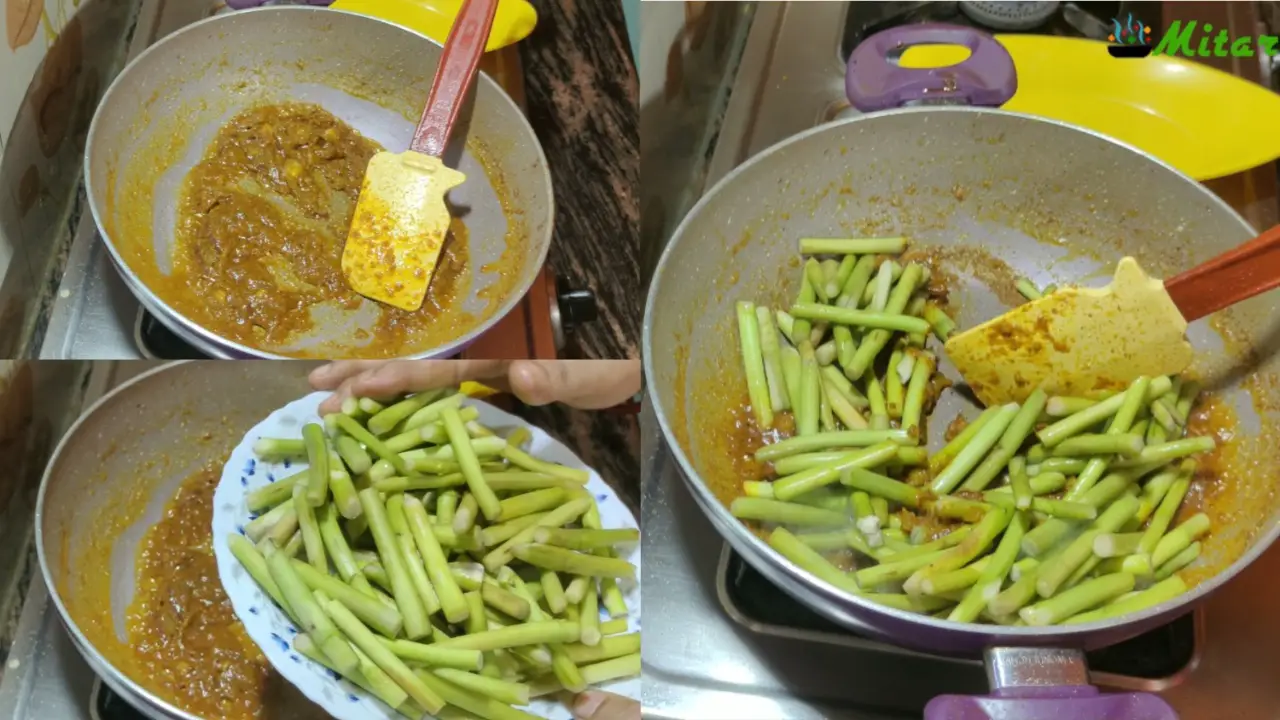
13. Sauté the stolons for 5 mins. When the water starts coming out from the stolons, cover the wok with a lid and let it cook for 5 mins. 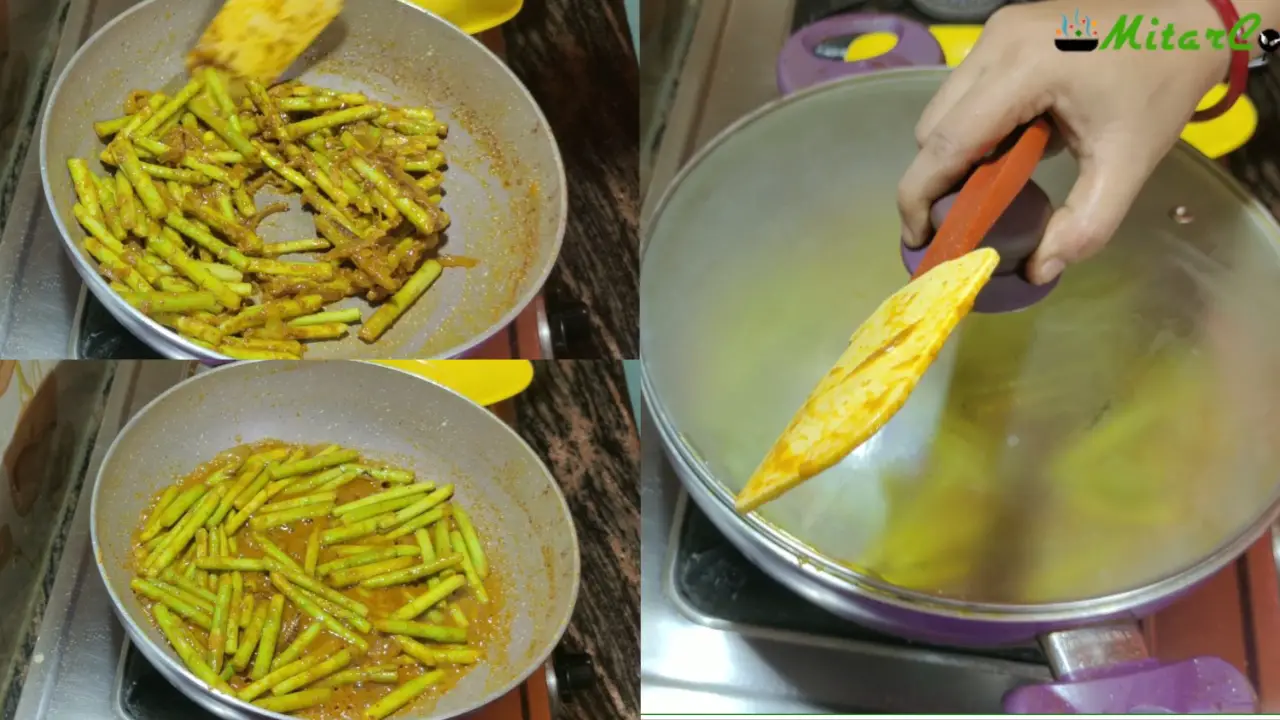
14. After 5 minutes, remove the lid and add all the sautéed prawns to the wok. Mix all the ingredients well.
(Expert tip: You can add potatoes to this recipe, but I did not include any in this particular recipe.) 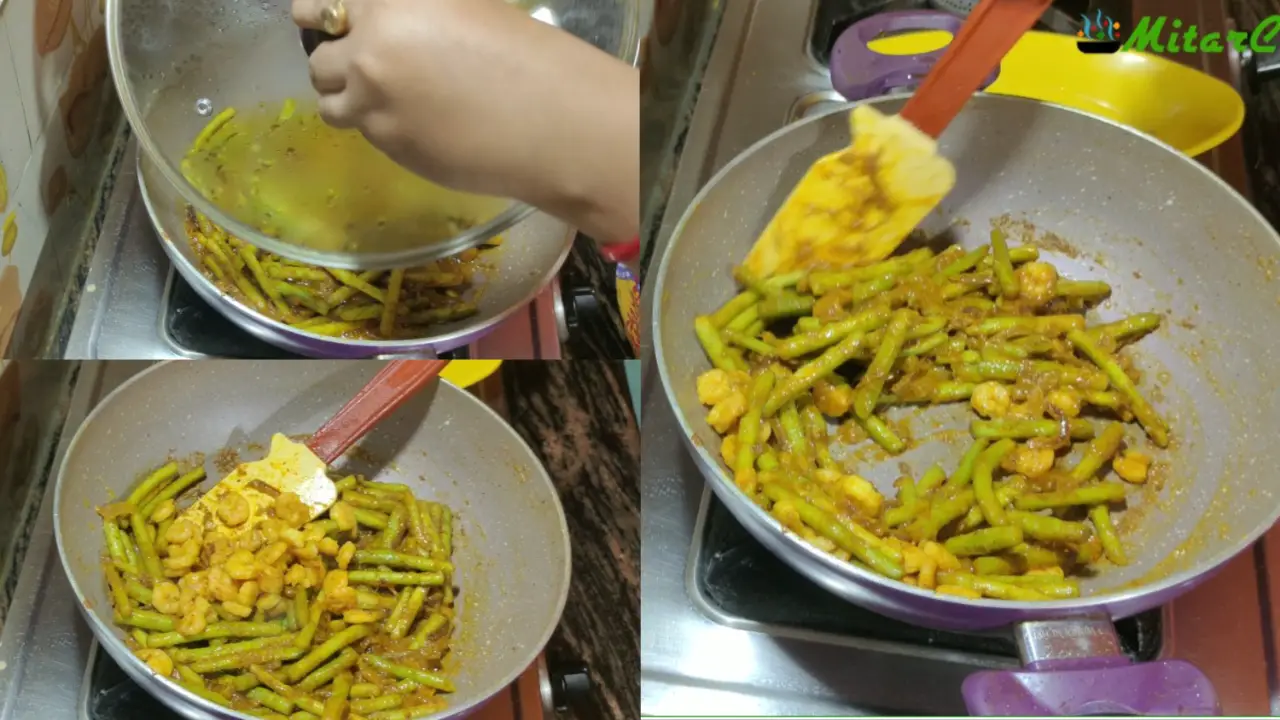
15. Now, add ½ cup of water into the wok.
(Expert tip: Do not add too much, otherwise, the stolons will melt completely.) 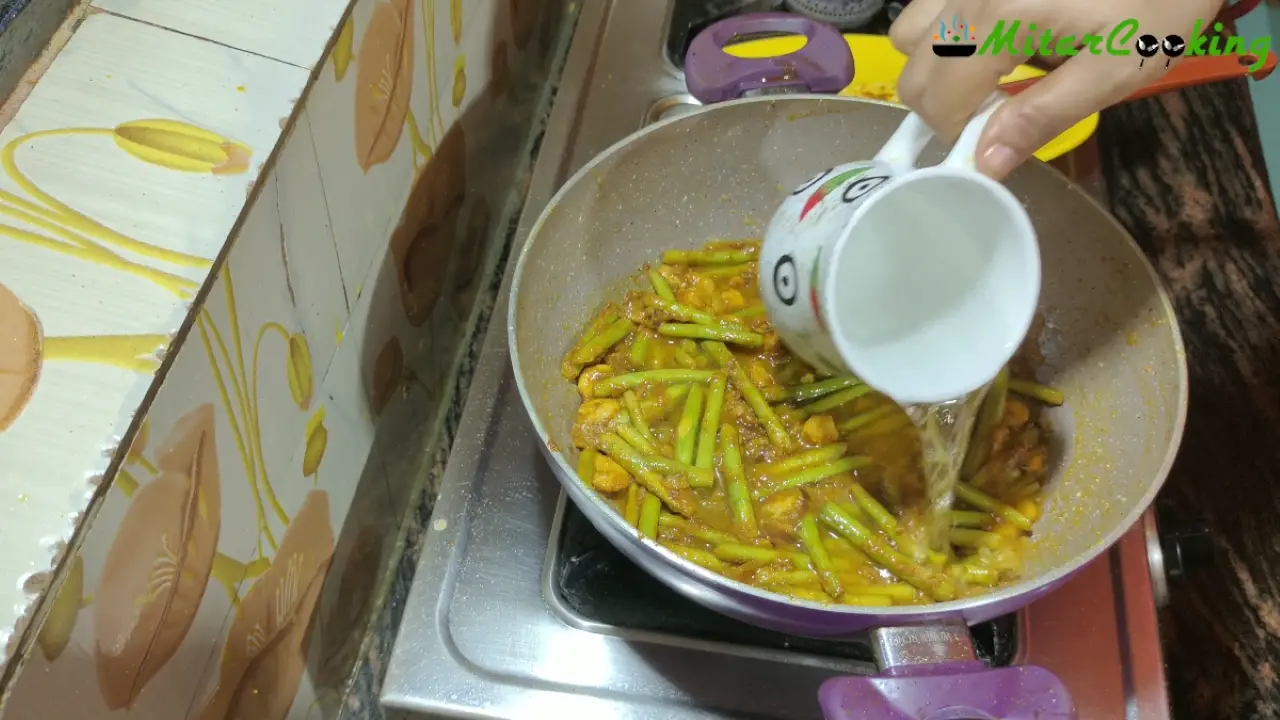
16. Let it simmer a bit. At this point, add a little bit of salt and the three-slit green chilis to the light gravy. Cover the wok with a lid and let it cook for 10 mins.
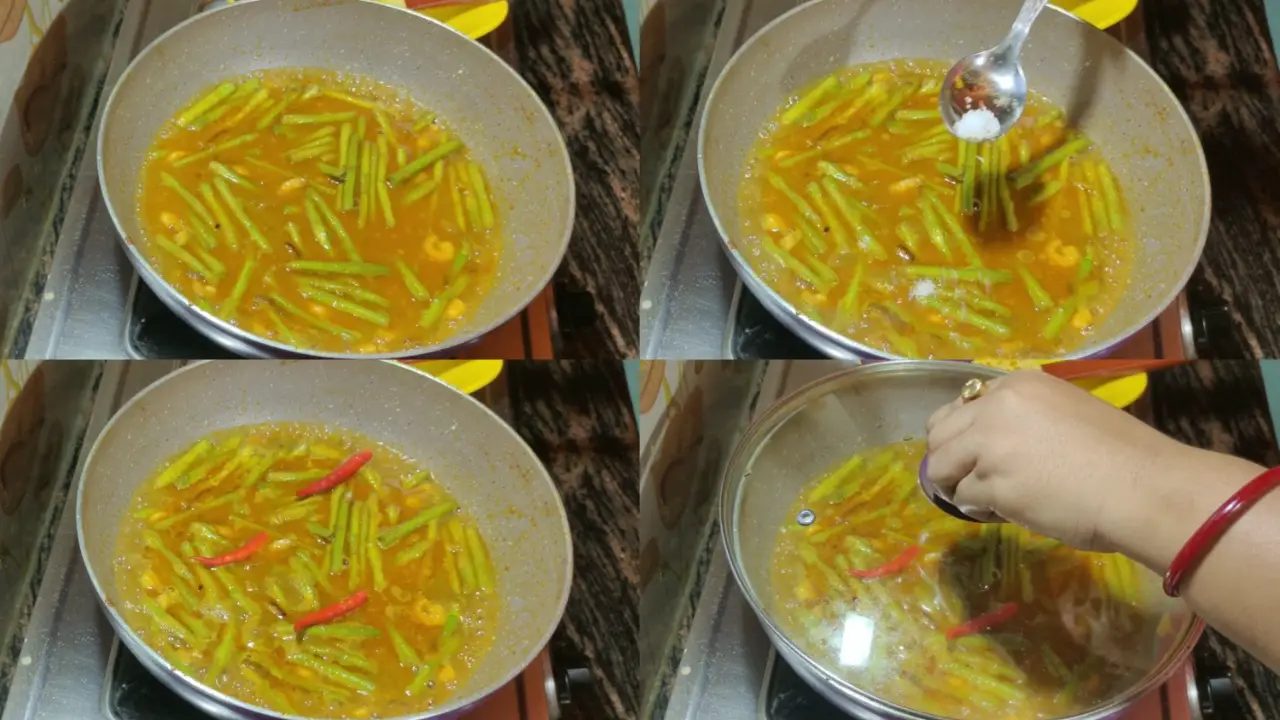
17. Keep the flame at medium to high level. In between, open the lid and check the consistency. If there is still some juice left, let it dry up and Kochur Loti Chingri is done.
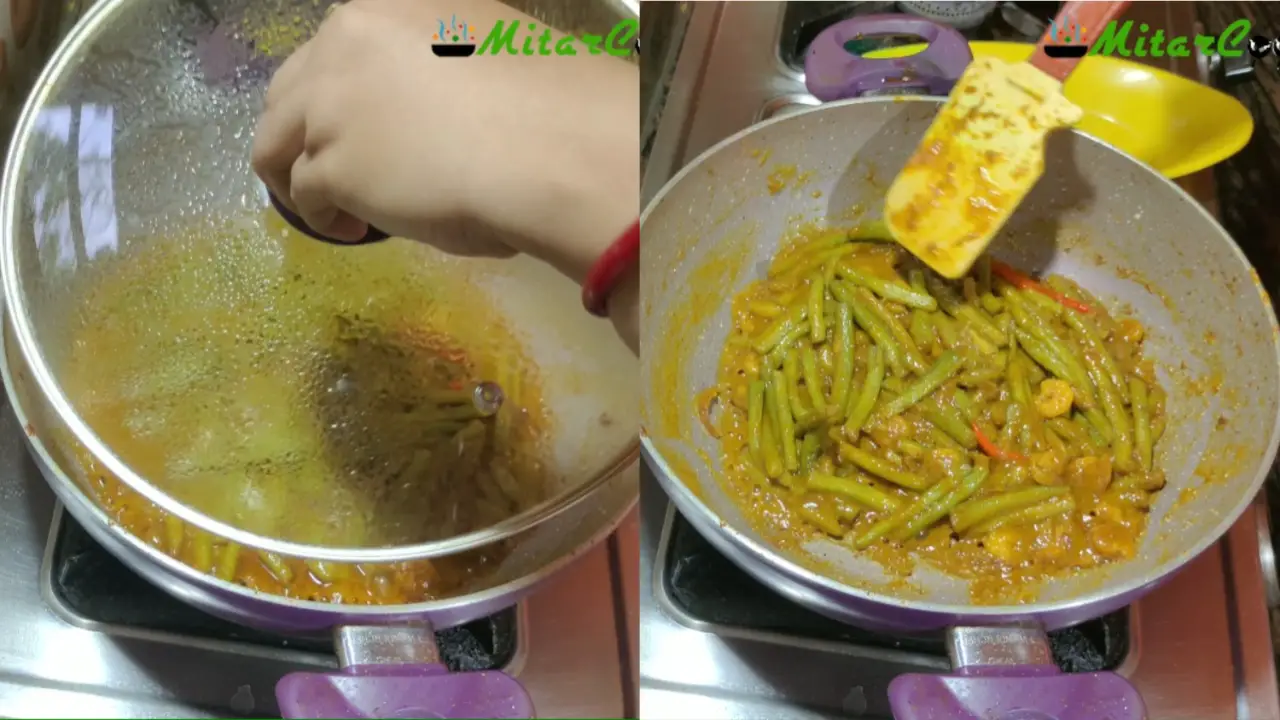
18. Transfer Kochur Loti Chingri to a bowl. Serve it hot along with steamed rice, vegetable pulao, luchi, roti (Indian bread) or paratha (layered flatbread). 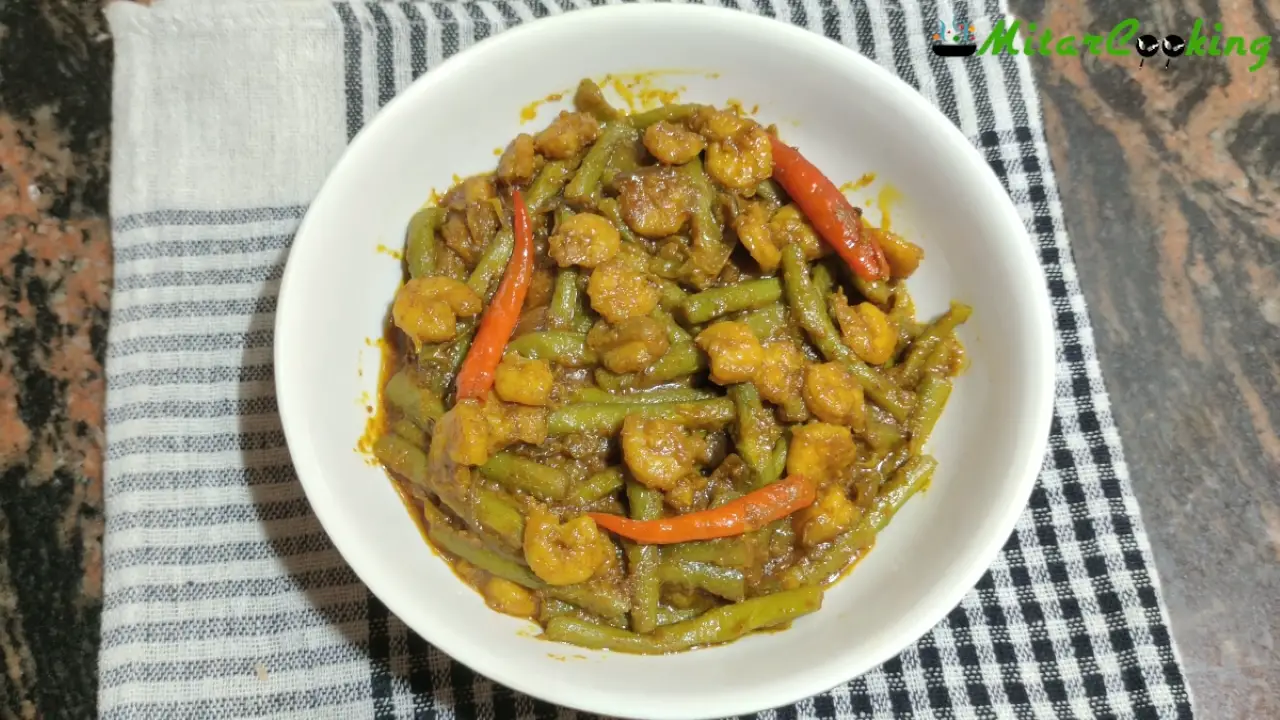
Recipe Card:
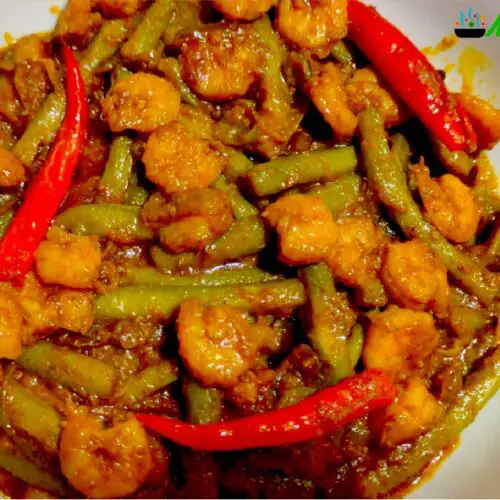
Kochur Loti Chingri
Ingredients
- 400 grams Taro stolon (cut, peeled & cleaned)
- 200 grams Prawn (cut, deveined & cleaned)
- 1 piece Onion (chopped)
- ½ tablespoon Kashmiri red chili
- ½ tablespoon Cumin powder
- ½ tablespoon Coriander powder
- 1 tablespoon Turmeric powder
- 3 pieces Red colored green chili
- 3 tablespoon Mustard oil
- Salt to taste
Paste
- 1 inch Ginger (pasted)
- 10 cloves Garlic (pasted)
- 2 pieces Green chili (pasted)
Instructions
- First, marinate the prawns with a pinch of salt and turmeric. Keep it aside for 10 mins.
- After 10 mins, you can see the change of color in the prawns.
- Heat the wok on a gas stove. When it is ready, add mustard oil to sauté the prawns.
- When the oil is hot, add the marinated prawns. Keep the flame low to medium. Sauté the prawns lightly.(Expert tip: Do not overdo it, otherwise, the prawns will become rubbery.)
- While sautéing the prawns, you will notice a little bit of water oozing out from them. Take out the prawns when the water has dried up.
- Add bit of oil into the same wok, raise the flame and let it heat up.
- When the oil is hot, add the chopped onions. Sauté the onions for 2 mins.
- When the onions are slightly fried, add the ginger-garlic-chili paste to the wok. Keep the flame low to medium.
- Sauté the paste along with the chopped onions for 2 mins. Keep the flame at medium to high.
- Now, add the powdered masalas. First, add the ½ tablespoon turmeric and then the ½ tablespoon red chili powder, followed by ½ tablespoon coriander and cumin powder. At this moment, add a pinch of salt to the preparation.
- Sauté all the ingredients and add a little bit of water to cook the masala.
- As soon as the water dries out, add the taro stolons.(Expert tip: These stolons are baby stolons, which is why I did not add them directly in the oil to sauté. Instead, I added them to the masalas. If you want then you can add the stalons directly into the oil to stir-fry it.)
- Sauté the stolons for 5 mins. When the water starts coming out from the stolons, cover the wok with a lid and let it cook for 5 mins.
- After 5 minutes, remove the lid and add all the sautéed prawns to the wok. Mix all the ingredients well.(Expert tip: You can add potatoes to this recipe, but I did not include any in this particular recipe.)
- Now, add ½ cup of water into the wok.(Expert tip: Do not add too much, otherwise, the stolons will melt completely.)
- Let it simmer a bit. At this point, add a little bit of salt and the three-slit green chilis to the light gravy. Cover the wok with a lid and let it cook for 10 mins.
- Keep the flame at medium to high level. In between, open the lid and check the consistency. If there is still some juice left, let it dry up and Kochur Loti Chingri is done.
- Transfer Kochur Loti Chingri to a bowl. Serve it hot along with steamed rice, vegetable pulao, luchi, roti (Indian bread) or paratha (layered flatbread).

